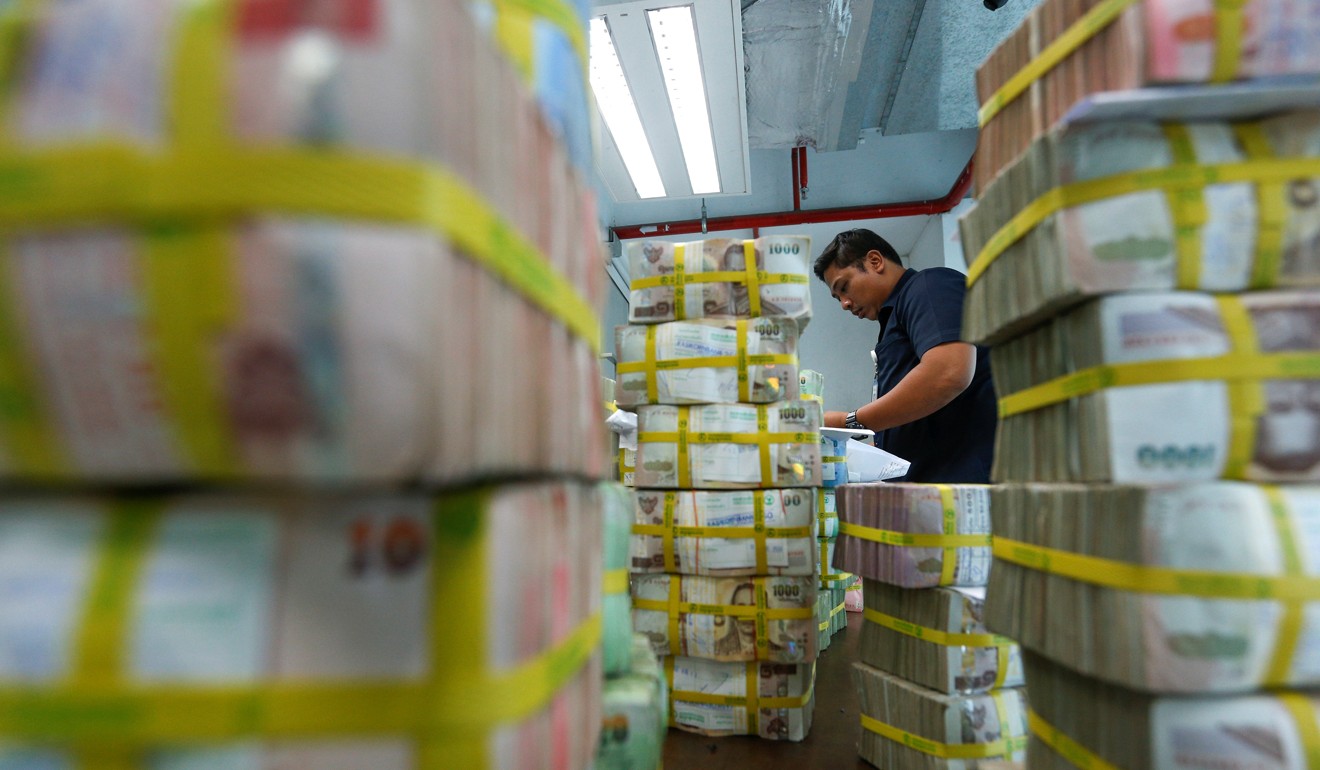
Why thrifty Asia’s growing appetite for debt could be its undoing, given the lessons from the 1997 financial crisis
Anthony Rowley says rising debt levels around the world, but particularly in Asia, are of concern even though efforts have been made to address the missteps of the past
Is Asia even more blind to the risk of debt crises than the rest of the world, which anyway has a poor record on this score? It would appear so as corporate and household debt piles up in the region to record levels that are higher than anywhere else in the world in relation to the size of economies.
Worldwide, debt reached a record US$237 trillion by the end of 2017, according to the Institute of International Finance (IIF). Most of this (US$174 trillion) is in advanced economies but emerging markets have been plunging faster and deeper into debt and certain Asian nations now have the dubious honour of being world leaders in the size of debt relative to GDP.

Huge debt is not the sole prerogative of the corporate sector in Asia. Household debt has soared to 95 per cent of GDP in South Korea, nearly 70 per cent in Thailand and 68 per cent in Malaysia. South Korea stands out, too, in terms of financial sector debt (82 per cent of GDP) while government debt in Japan has hit 222 per cent of GDP.
With the 20th anniversary of the Asian crisis last year, concerns were raised by government officials and multilateral institutions that the region could be facing renewed risk. But these were assuaged by economists’ assurances that, this time, “things are different”. Haven’t we heard that before – many times?

Why are things different now? Because, it is argued, at the time of the 1997 crisis, many Asian business corporations had borrowed dollars to finance their business when their revenues were in local currency. When the dollar rose against Asian currencies, debt repayment at fixed exchange rates imposed a savage squeeze.
Nowadays, by contrast, most Asian exchange rates float against the dollar and in any case, firms have avoided heavy dollar borrowing. Moreover, it is noted, they have avoided having too many short-term loans to finance long-term investment. Finally, governments have built up dollar reserves in case of need.
Debt is sustainable as long as revenue streams are healthy. Once they decline, the positive ‘gearing’ effect of debt goes into reverse
Some (optimists) also argue that the size of the current debt “iceberg”, as the IIF terms it, in Asia and elsewhere is not something to worry about in itself. It would only matter if interest rates were to rise far off their historic floor, and that is unlikely to happen any time soon, given the benign outlook for inflation.
These are false consolations. The fact that interest rates are likely to remain subdued for now is likely to encourage businesses, households, financial institutions and governments to continue borrowing so long as economic activity holds. This means that the reckoning, when it comes, could be very costly.
Debt is sustainable as long as revenue streams are healthy. Once they decline, the positive “gearing” effect of debt goes into reverse. A small capital base can support strong business activity if supplemented by debt, but capital can shrink fast when fixed debt repayments have to be made from declining revenues. That is when crises occur.
Watch: Trump’s protectionist campaign promise
The problem is not confined to Asia. Corporate debt in the US has reached 73 per cent of GDP and and 103 per cent in the euro zone, while US government debt is the same size as GDP, and household debt is 77 per cent. What is notable is that the debt “habit” is growing fast in an Asia once known for thrift, especially in the household sector.
Warnings are increasing. The IMF has voiced concern and has just embarked on regular monitoring of debt among its 180 or so member countries. The Organisation for Economic Cooperation and Development has drawn attention to the problem, particularly in China and South Korea, while the World Bank has sounded an alarm over elevated corporate debt. Yet, still, the debt mountain continues to grow. Coming down it could be a painful slide.
Anthony Rowley is a veteran journalist specialising in Asian economic and financial affairs

